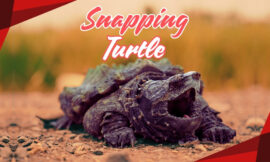Introduction
Cats are known for their quirky personalities, adorable faces, and unique traits, but some cats may exhibit unusual characteristics that lead people to wonder if they could have a condition like Down syndrome. If you’ve seen a cat with Down syndrome-like symptoms, you may be curious about their health and care. While cats can’t technically have Down syndrome as humans do, some cats may exhibit traits that resemble this genetic disorder.
In this guide, we’ll explore the facts about cats with Down syndrome-like characteristics, discuss common misconceptions, and offer practical tips on how to care for a cat with special needs. Whether you’re considering adopting a cat with unique features or already have a special needs cat, this article will help you understand the best way to support their well-being.
1. Can Cats Really Have Down Syndrome? Understanding Feline Genetics
One of the most common questions people ask when seeing a cat with unusual facial features or behaviors is whether cats can have Down syndrome. The short answer is no. Down syndrome is a genetic condition caused by an extra copy of chromosome 21 in humans, leading to physical and developmental changes. However, cats have a different set of chromosomes—19 pairs, to be exact—so they cannot have Down syndrome in the same way humans can.
That said, certain genetic disorders or developmental issues in cats may cause them to exhibit Down syndrome-like characteristics, such as unique facial features, coordination problems, or cognitive challenges. These conditions, while not identical to Down syndrome, can affect a cat’s health and behavior, leading some to believe they are dealing with a cat with Down syndrome.
It’s important to understand that these conditions are often caused by genetic mutations or developmental issues that occur in the womb. Cats with these traits are sometimes referred to as having special needs or being neurologically different, and they require extra care and attention.
While it’s impossible for a cat to be diagnosed with Down syndrome, understanding feline genetics and the potential for genetic disorders can help owners provide the best care for their pets. If you notice unusual characteristics in your cat, it’s essential to consult a veterinarian to ensure they receive the proper diagnosis and treatment.
2. Common Characteristics of a Cat with Down Syndrome-Like Symptoms
While cats can’t technically have Down syndrome, they may show certain traits that resemble the condition. These characteristics are often the result of neurological or genetic disorders and can vary from cat to cat. Here are some of the most common Down syndrome-like symptoms in cats:
- Unusual facial features: Some cats may have flattened faces, widely spaced eyes, or a broad nose bridge, similar to the appearance of humans with Down syndrome. These features are typically due to congenital defects or genetic mutations.
- Poor coordination: Cats with Down syndrome-like symptoms may struggle with balance and motor skills. You might notice that they walk with a wobble, have trouble jumping, or fall frequently.
- Cognitive challenges: These cats may appear less aware of their surroundings or exhibit delayed reactions to stimuli. They may also take longer to learn new behaviors or commands.
- Behavioral differences: Cats showing Down syndrome-like traits may exhibit abnormal social behavior, such as excessive meowing, disinterest in interacting with other pets, or anxiety around humans.
- Slow physical development: Kittens with neurological conditions may take longer to reach physical milestones, such as walking or eating solid food.
While these characteristics may seem alarming, many cats with these traits can live happy, fulfilling lives with the right care and support. It’s important to work with a veterinarian to diagnose the underlying causes and provide a care plan tailored to your cat’s unique needs.
Remember, just because a cat displays these traits doesn’t mean they are unhealthy or unhappy. Understanding the characteristics and ensuring proper care is key to supporting your special needs cat.
3. How to Care for a Cat with Down Syndrome-Like Traits
Caring for a cat with Down syndrome-like traits requires patience, love, and a few adjustments to your daily routine. These cats often need extra attention to ensure their safety and well-being. Here are some practical tips for caring for a special needs cat:
- Create a safe environment: Cats with coordination issues or poor motor skills may struggle with navigating stairs, high places, or narrow spaces. Ensure that your home is safe by providing easy access to food, water, and litter boxes. Consider using ramps or steps if your cat struggles to jump onto furniture.
- Use interactive toys: Cats with cognitive challenges may need extra stimulation to stay engaged. Offer a variety of toys that encourage mental and physical activity. Puzzle feeders, balls, and interactive cat toys can help keep them entertained and mentally sharp.
- Schedule regular vet visits: Cats with genetic or neurological disorders often need more frequent check-ups to monitor their health. A veterinarian can help manage any health issues and provide advice on how to handle specific symptoms.
- Monitor their diet: Cats with special needs may have difficulty feeding themselves, so it’s important to provide nutritious food in an easily accessible area. Make sure they’re eating regularly and maintain a balanced diet to support their overall health.
- Offer comfort and companionship: Cats with Down syndrome-like characteristics may experience anxiety or social difficulties, making them more dependent on human interaction. Spend quality time with your cat to help them feel secure, whether it’s through petting, playing, or simply sitting with them.
By following these care tips, you can ensure that your special needs cat lives a comfortable and happy life. With proper attention and the right environment, these cats can thrive just like any other pet.
4. Understanding Health Issues in Cats with Down Syndrome-Like Symptoms
Cats with Down syndrome-like symptoms may face certain health challenges due to underlying genetic or neurological conditions. While not all cats with unique traits will have serious health issues, it’s essential to be aware of potential problems and how to manage them.
- Respiratory problems: Cats with unusual facial structures, such as flattened noses or wider nasal bridges, may have difficulty breathing. This can lead to chronic respiratory infections or trouble breathing during physical activity. It’s important to monitor your cat’s breathing and seek veterinary care if you notice persistent issues.
- Vision and hearing impairments: Some cats with Down syndrome-like traits may have poor vision or hearing, which can affect their ability to navigate their environment. If your cat seems easily startled or has trouble locating sounds, consult a vet to determine if they have a sensory impairment.
- Neurological disorders: Many cats that exhibit Down syndrome-like symptoms have neurological conditions that impact their motor skills, coordination, and cognitive abilities. These disorders may require long-term management, such as medication or physical therapy, to improve the cat’s quality of life.
- Dental issues: Cats with unusual facial structures may also have dental problems, including misaligned teeth or overbites. Regular dental check-ups are essential to prevent pain or infection caused by poor dental health.
If your cat shows any of these health issues, it’s crucial to work closely with a veterinarian to create a comprehensive care plan. Regular check-ups, early diagnosis, and ongoing care can help manage the symptoms and keep your cat as healthy as possible.
Understanding and managing the health issues in cats with Down syndrome-like symptoms ensures that your pet can live a long, happy life, even with their unique challenges.
5. Do Certain Cat Breeds Resemble Down Syndrome Traits?
While any cat can display Down syndrome-like traits, certain breeds are more likely to have physical characteristics that resemble these symptoms. These features are often the result of genetic traits specific to the breed rather than a health condition.
Some of the cat breeds that might exhibit these traits include:
- Persian Cats: Known for their flat faces and wide-set eyes, Persians often display facial features that resemble those of Down syndrome-like cats. While their appearance may be similar, these characteristics are part of the breed’s natural traits and do not indicate any underlying health conditions.
- Scottish Fold: With their unique folded ears and round faces, Scottish Folds sometimes appear to have a “surprised” look, which can be mistaken for Down syndrome traits. Again, these features are part of the breed’s genetics.
- Exotic Shorthair: Similar to the Persian, the Exotic Shorthair has a flat face and large eyes, which may give the cat a look that some people associate with Down syndrome-like symptoms.
It’s important to remember that these breeds do not have Down syndrome but rather display unique genetic traits. If you own one of these breeds and are concerned about their health, it’s always a good idea to consult a veterinarian for a thorough check-up.
6. Living with a Special Needs Cat: Tips for a Happy, Healthy Life
Owning a special needs cat with Down syndrome-like symptoms can be a rewarding experience, but it requires extra care and attention to ensure your pet leads a fulfilling life. Here are some tips for living with a special needs cat:
- Consistency is key: Cats with neurological or cognitive challenges thrive on routine. Try to keep feeding times, playtimes, and daily activities as consistent as possible to provide stability.
- Adapt your home: Create a safe, accessible space for your cat by removing obstacles and providing ramps or steps for easier access to higher surfaces. This will help cats with coordination issues move around more comfortably.
- Provide mental stimulation: Special needs cats benefit from engaging activities that stimulate their minds. Interactive toys, puzzle feeders, and even short training sessions can help keep them mentally sharp and entertained.
- Be patient: Cats with Down syndrome-like traits may take longer to learn new behaviors or adapt to changes in their environment. Patience and understanding go a long way in helping them feel secure.
Living with a special needs cat is a journey that requires love, patience, and commitment, but it can also be incredibly fulfilling. By providing the right care, your cat can lead a happy and healthy life, bringing joy and companionship to your home.
For more exciting blogs, visit our homepage Magzineco.
Conclusion
While cats can’t technically have Down syndrome, some may exhibit similar traits due to genetic or neurological conditions. These Down syndrome-like symptoms in cats can include unique facial features, coordination difficulties, and cognitive challenges. With the right care and support, cats with special needs can live happy, fulfilling lives.
In this guide, we’ve covered the essential facts about caring for a cat with Down syndrome-like traits, including how to recognize the symptoms, what health issues to watch for, and how to provide the best care. Whether you already own a special needs cat or are considering adopting one, understanding their unique needs will help you give them a happy and healthy life.
By embracing their differences and providing the love and care they need, your special needs cat can thrive in a nurturing environment, bringing joy and companionship to your life.



